|
|
|
 |
GALLERY SIX |  |
|
|
|
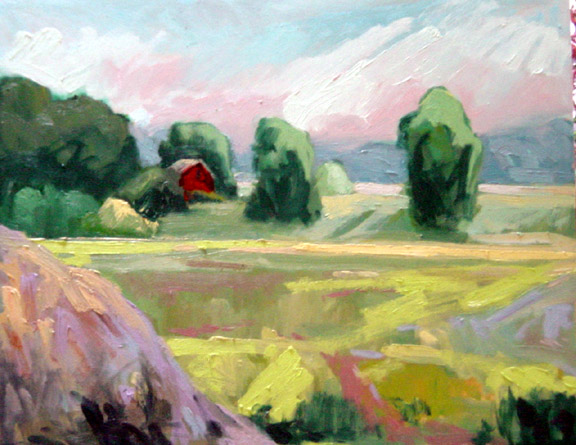 Before New Albany Swallows It This painting was juried into a Schumacher Gallery (on the campus of Captial University), Bexley, Ohio in November 2002. This competition was open to all artist in Central Ohio. Only 40 artist were accepted into the show. This painting is 16x20 oil on masonite. Just a few months after I painted this scene (June 2002) New Albany did swallowed it. The fields are full of 3-story appartments. |
|
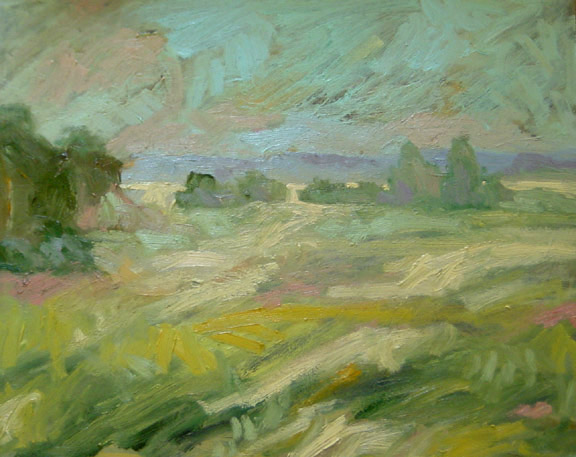 Before New Albany Swallows It 2 |
|
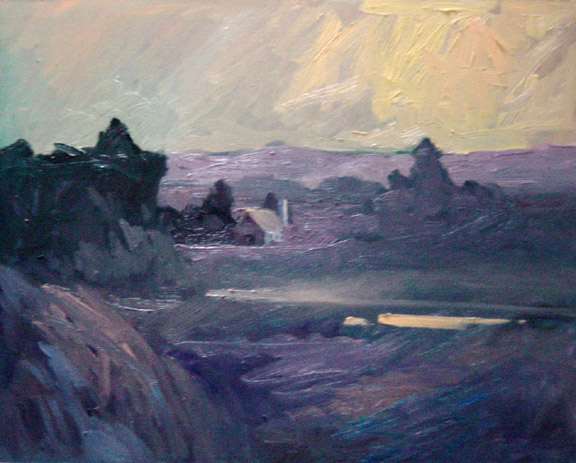 Before New Albany Swallows It 3 |
|
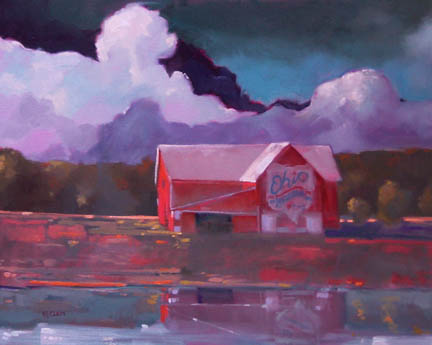 Ashtabula Co, Ohio Bicentennial Logo Barn |
|
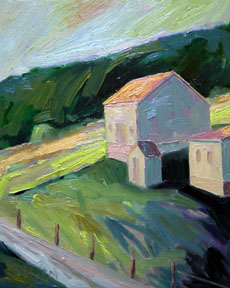 Near Smithton, PA |
|
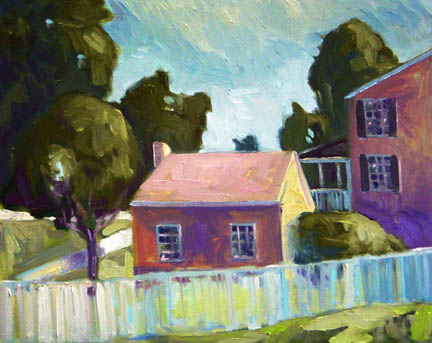 West Overton Homestead In 1800, a group of German Mennonites from Bucks County, Pennsylvania, led by Henry Overholt, crossed the Alleghenies and established a farming settlement on the fertile plains just west of the Chesnut Ridge. Henry's son, Abraham, had built a three story brick house and was the proprietor of a large gristmill and a distillery by 1838, a general store, farm, and other related buildings, become known as West Overton Village, near Scottdale, about 30 miles south of Pittsburgh. Abraham's daughter, Elizabeth, and her husband John Frick, have a son, Henry Clay Frick, born in 1849. The Frick birthplace, a small stone cottage, also served as the spring house on the Overholt farm. Although Frick only lived in the cottage during his infancy, he never lived far from his Overholt grandparents and spent a great deal of time in their company. As a young man, Frick became interested in the coke business and eventually began building ovens to produce coke for the Pittsburgh market. By 1881, Frick was a millionaire living in Pittsburgh. This painting is 16x20 oil on masonite. |
|
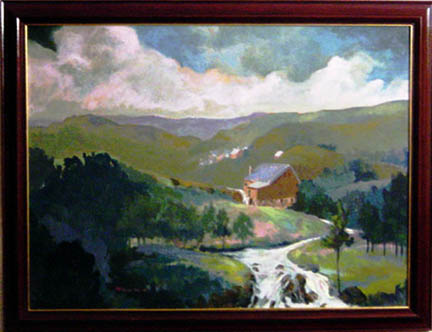 My View Of Perryopolis 2 Centurys Ago When land in Southwestern Pennsylvania first became available for purchase, George Washington had his agent, William Crawford, secure 1,644 acres for him. Until his death in 1799 Washington owned much of the ground where Perryopolis now sits. Washington first visited his property in October, 1770, and described the land in his diary as “as fine a land as I have ever seen, a great deal of rich meadow; it is well watered and has a valuable mill seat.ÃƒÂ¢Ã¢â€šÂ¬Ã‚Âť The mill Washington referred to was completed in 1776 and as often happened to an area, other industries soon followed. A distillery was built, the first State bank west of the Allegheny Mountains was established, William Searight built a large fulling mill near Washington Run Creek, and a sawmill, pottery factory, glass factory, tannery, and brick yard were also here at one time. This is an acrylic painting 27x37 . Perryopois celebrated it bicentenial June 28, 2014. |